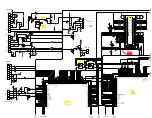
PROGRAMMER’S REFERENCE MANUAL
Miscellaneous commands
Page 59
Miscellaneous commands
This chapter describes how to use counters and various feeding commands.
Counters
Ten counters are available for consecutive numbering. They are numbered 1, 2, ..., 10.
Each counter is completely and independently programmable. The capacity is 9 digits (up to
999 999 999).
Any of the counters may be printed as text or bar code, or both, and more than one counter
may be printed on the same label.
Initialising counters
The command to initialise a counter is:
!N<n> <v> <i> <w> <u>
where:
<n>
the number by which this counter is referenced (1 - 10)
<v> initial
count
value
<i>
increment value (negative for counting down) to be added to the count when
updating the counter
<w>
width, i.e. number of digits to be printed (1 - 9). Leading zeros are added if the
count value has less than <w> digits. If the count value has more than <w> digits
the excess digits are discarded. If <w> = 0 the value of the counter is printed
without leading zeroes, up to 9 digits.
<u>
update interval, i.e. the number of labels to print before the counter is updated.
<u> may be omitted and defaults to 1.
If
<u>
is omitted
<w>
may be omitted, in which case it defaults to 0.
If
<u>
and
<w>
are omitted
<i>
may also be omitted and will then be set to 1.
Defining a counter only defines its initial state. It will not appear in print until it is referenced
in a field as described above.
Only counters that are referenced in the print format will be updated after the print cycle.
This makes it possible to maintain different counters for different labels.
All counters retain their value when the printer is switched off and will continue where they
left off when the printer is again switched on and printing resumed.
Example:
!N1 500 30 4 2
The example above defines counter no. 1 to count 4 digits, starting at 500 and increment by
30 every two labels printed. The count cycle will be:
0500, 0500, 0530, 0530, ..., 9950, 9950, 9980, 9980, 0010, 0010, 0040, etc.
















































